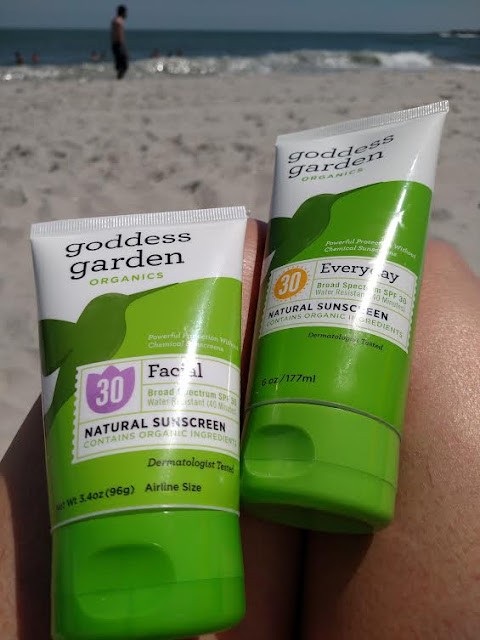You may have heard that there are different types of sunscreen. Some have a chemical sunscreen and some have physical sunscreen.
So, what's the difference between a physical sunscreen and a chemical sunscreen?
Physical: Reflection
Mineral sunscreens are labeled with an SPF number which tells you the level of protection you get from the burning UVB rays and the deeper penetrating UVA rays. This type of sunscreen is safe and ideal for people with sensitive skin, kids, expecting mothers, nursing mothers and anyone else who is concerned about chemicals entering their bodies.
Burt's Bees Chemical Free Sunscreen is a physical sunscreen. Mineral sunscreen tends to be thick and can leave a whitish film on the skin. They take a good effort to rub onto the skin. Luckily, many brands are now improving the way their mineral sunscreens spread on the skin so they are easier to apply.
Chemical: Absorption
A chemical sunscreen absorbs UV radiation. Avobenzone, Benzophenome, Mexoryl, Oxybenzone and Menthyl Anthranilate are some examples of chemical sunscreens.
Chemical Sunscreens are labeled with an SPF number, such as 30, which lets you know the level of protection from the burning UVB rays. Additional UVA ray protection makes them Broad Spectrum Sunscreens. Some people can be sensitive to chemical sunscreens and develop skin irritations such as an itchy rash, especially those with skin conditions such as, eczema.
There are other problems with chemical sunscreens. They can break down in the sun's radiation. They can also mimic hormones when absorbed by the skin. It has been proven that chemicals in sunscreen can be absorbed into the body and can be detected in the blood, urine and breast milk.
Many sunscreens include both physical and chemical sunscreens to provide broad spectrum UV protection.
Both types of sunscreen offer good protection from UV rays. The key to them working well, is applying them often. Aim for reapplication every 2 hours. Those who burn easily should apply every hour. Here are some great natural sunscreens to try.
I always check the EWG's yearly sunscreen guide for find the best sunscreen for me.
Here is a link to find out more about the EWG's Sunscreen Guide and find the best sunscreen for you!
Read more about the EWG Sunscreen Guide
Have a Sun Safe Day!🌞
PS: Thanks for using my amazon💋
As an Amazon Associate, I earn from qualifying purchases at no cost to you. That keeps my blog running and supports the care of animals in need!😸
As an Amazon Associate, I earn from qualifying purchases at no cost to you. That keeps my blog running and supports the care of animals in need!😸



Comments
Post a Comment